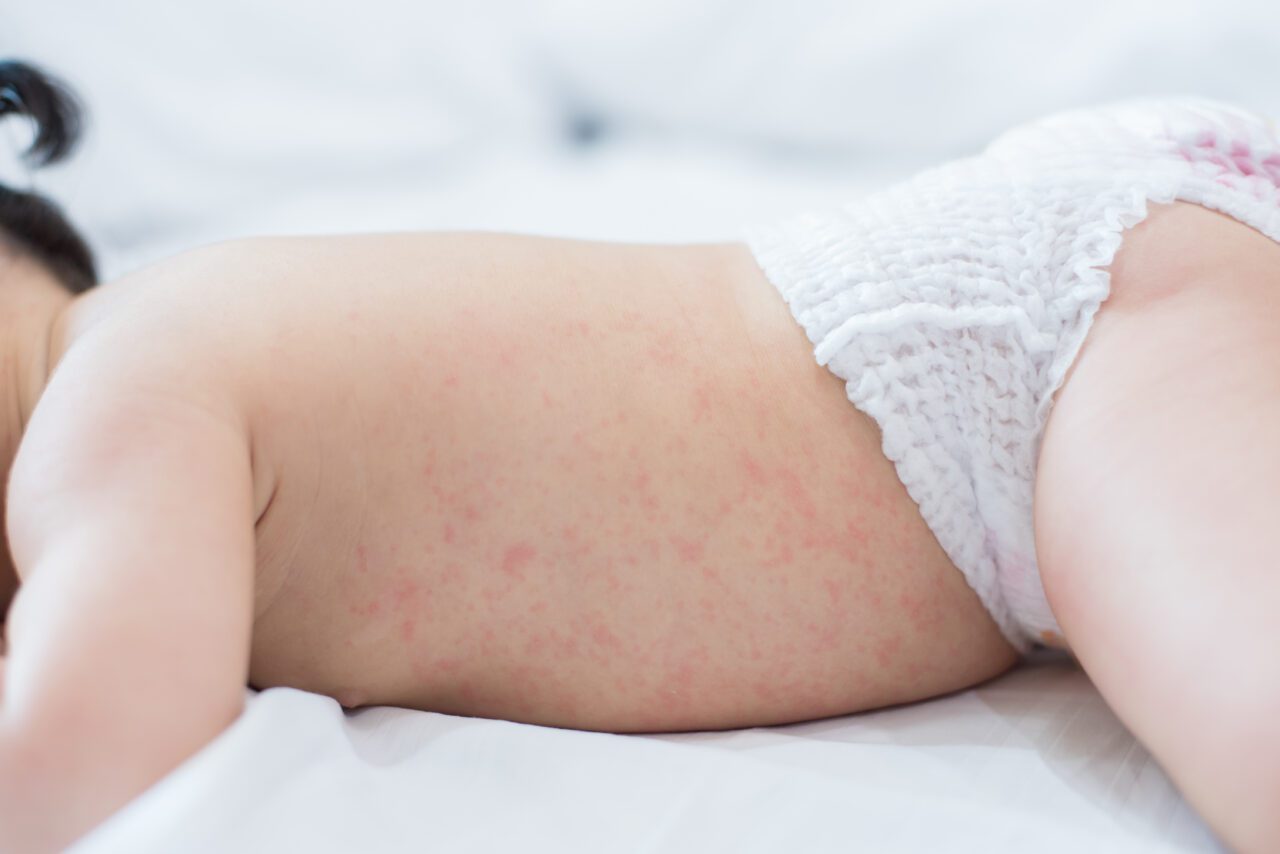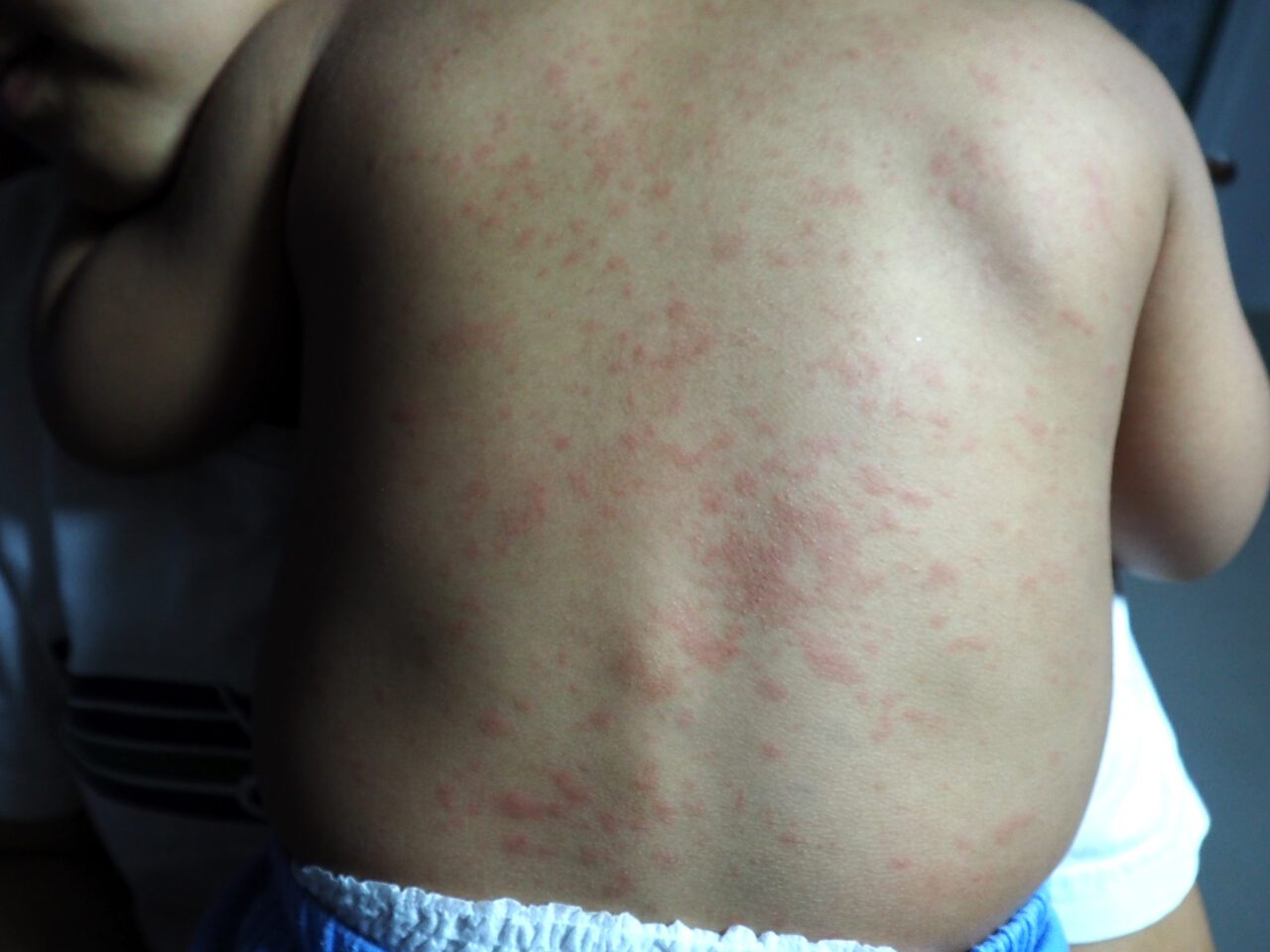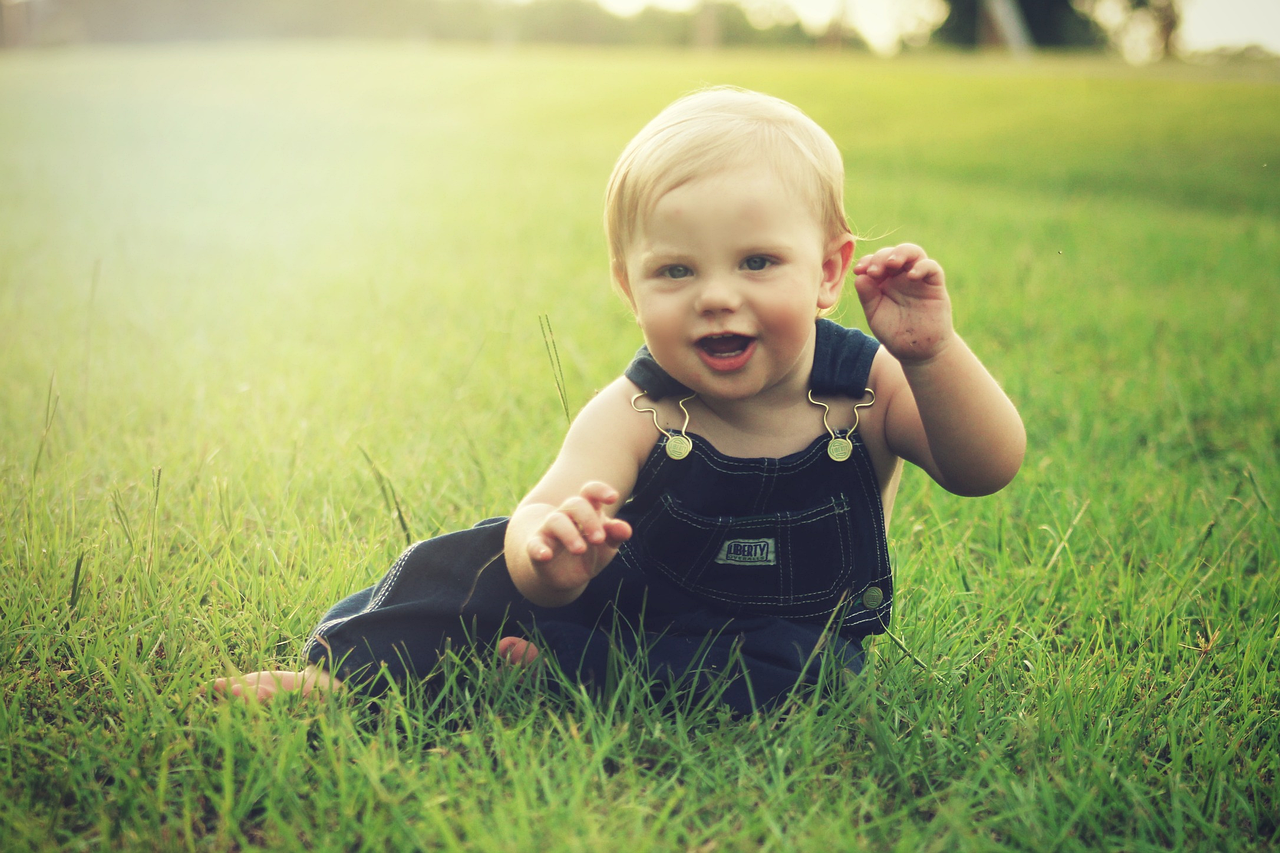Having a baby is a wonderful and joyous experience. However, it also comes with its fair share of challenges. One common issue that many parents face is managing baby rash on the back. Baby rashes can be uncomfortable for your little one and worrisome for parents. In this comprehensive guide, we will provide you with trusted advice on managing baby rash on the back, ensuring that your baby stays comfortable and happy.
Understanding Baby Rash on the Back
Babies have delicate and sensitive skin, making them prone to various types of rashes. A baby rash on the back can manifest in different forms, including redness, bumps, or patches of dry skin. It is essential to understand the causes and symptoms to effectively manage and treat the rash.

Common Causes of Baby Rash on the Back
There are several factors that can contribute to a baby developing a rash on their back. Some of the common causes include:
- Diaper Irritation: A wet or soiled diaper can cause irritation and lead to a rash on the back.
- Heat and Sweat: Babies tend to sweat, especially in warm weather. Sweat can accumulate on their back, causing a rash.
- Allergic Reactions: Babies can be sensitive to certain fabrics, detergents, or skincare products, leading to an allergic reaction and rash.
- Eczema: Eczema is a chronic skin condition characterized by red, itchy, and inflamed patches. It can occur on the back as well.
- Contact Dermatitis: Contact with certain irritants or allergens can cause a rash on the back.
- Prickly Heat: Prickly heat, also known as miliaria, is a common rash that occurs when sweat glands become blocked, resulting in small bumps on the skin.
- Viral or Bacterial Infections: In some cases, a baby rash on the back can be a symptom of a viral or bacterial infection.
Identifying the Type of Rash
Properly identifying the type of rash is crucial for effective management. Here are some common types of rashes that can occur on a baby’s back:
- Heat Rash: Heat rash appears as small, red bumps on the skin. It is caused by sweat becoming trapped in the pores.
- Diaper Rash: Diaper rash usually occurs on the bottom but can extend to the back. It is characterized by redness, irritation, and sometimes, peeling or flaking skin.
- Eczema: Eczema rashes are typically red, itchy, and inflamed. They can appear on various parts of the body, including the back.
- Contact Dermatitis: Contact dermatitis rashes can range from redness and itchiness to blisters or dry, scaly patches. They occur when the skin comes into contact with an irritant or allergen.
- Prickly Heat: Prickly heat rashes consist of small, itchy bumps that often occur in areas prone to sweating, such as the back.
- Viral or Bacterial Infection: Infections can cause different types
How to Prevent Baby Rash on the Back
Prevention is key when it comes to managing baby rash on the back. By taking a few simple steps, you can reduce the likelihood of your baby developing a rash. Here are some preventive measures to consider:
- Keep the Back Clean and Dry: Regularly bathe your baby with lukewarm water and a mild, fragrance-free cleanser. After bathing, gently pat the back dry with a soft towel.
- Choose the Right Diapers: Opt for breathable diapers that allow air circulation. Change diapers frequently to prevent moisture buildup.
- Avoid Tight Clothing: Dress your baby in loose-fitting, breathable clothing made of natural fabrics like cotton. Avoid synthetic materials that can trap heat and irritate the skin.
- Use Gentle Laundry Detergent: Wash your baby’s clothes, blankets, and bedding with a hypoallergenic and fragrance-free laundry detergent to minimize the risk of skin irritation.
- Keep the Back Cool: During hot weather, use fans or air conditioning to keep the room temperature comfortable. Avoid excessive bundling or overheating your baby.
- Be Mindful of Allergens: If you notice a pattern of rashes after using certain products or fabrics, consider avoiding them and opting for hypoallergenic alternatives.
- Moisturize the Skin: Apply a gentle, hypoallergenic moisturizer to your baby’s back after bathing to keep the skin hydrated and prevent dryness.
By incorporating these preventive measures into your daily routine, you can significantly reduce the occurrence of baby rash on the back.

OLYMPUS DIGITAL CAMERA
Safe and Effective Home Remedies
When your baby develops a rash on their back, there are several safe and effective home remedies that can provide relief. It’s important to note that these remedies may work differently for each baby, so it’s essential to monitor your little one’s reaction. Here are some home remedies to try:
- Oatmeal Baths: Adding finely ground oatmeal to your baby’s bathwater can help soothe and relieve itchiness associated with rashes. The natural properties of oatmeal have a calming effect on the skin.
- Coconut Oil: Apply a thin layer of coconut oil to the affected area. Coconut oil has moisturizing and anti-inflammatory properties that can help alleviate discomfort and reduce redness.
- Aloe Vera Gel: Pure aloe vera gel can be applied to the rash to soothe and cool the skin. Ensure that you use a high-quality, natural product without added fragrances or additives.
- Chamomile Tea Compress: Brew a cup of chamomile tea, let it cool, and then use a clean cloth to apply the tea as a compress to the rash. Chamomile has anti-inflammatory properties and can provide relief.
- Baking Soda Paste: Mix a small amount of baking soda with water to create a paste. Gently apply the paste to the rash and leave it on for a few minutes before rinsing. Baking soda can help neutralize irritants and reduce inflammation.
- Breast Milk: If you are breastfeeding, applying a few drops of breast milk to the rash can help soothe and promote healing. Breast milk contains antibodies and nutrients that are beneficial for the skin.
It’s important to remember that these home remedies are not a substitute for medical advice.
Over-the-Counter Treatments
In some cases, home remedies may not be sufficient to manage a baby rash on the back. Over-the-counter treatments can provide additional relief and aid in the healing process. However, it’s crucial to choose products specifically formulated for babies and follow the instructions carefully. Here are some commonly used over-the-counter treatments:
- Diaper Rash Creams: Diaper rash creams with zinc oxide can create a protective barrier between the baby’s skin and the diaper, reducing irritation and promoting healing.
- Hypochlorous Acid (HOCl): HOCl can help kill bacteria causing the rash and reduce inflammation.
- Calamine Lotion: Calamine lotion can provide cooling relief for itchy rashes. Apply a thin layer to the affected area and avoid excessive rubbing or scratching.
- Antifungal Creams: If the rash is suspected to be caused by a fungal infection, such as yeast, antifungal creams can be used under medical guidance.
Seeking Medical Advice
While most baby rashes on the back can be managed at home, there are instances where medical intervention is necessary. If you notice any of the following signs or symptoms, it’s important to seek medical advice promptly:
- Severe or Worsening Rash: If the rash spreads rapidly, becomes increasingly inflamed, or shows signs of infection, such as pus or oozing, it’s important to consult a healthcare professional.
- Fever or Discomfort: If your baby develops a fever or appears unusually irritable or uncomfortable, it may indicate an underlying infection or a more serious condition that requires medical attention.
- Persistent Rash: If the rash persists for an extended period or does not improve with home remedies or over-the-counter treatments, it’s advisable to consult with a healthcare professional.
- Bleeding or Open Sores: If the rash causes bleeding, open sores, or appears to be deep or ulcerated, medical evaluation is necessary.
Soothing the Skin Rash on Back: Dos and Don’ts
When managing a baby rash on the back, it’s important to adopt practices that promote comfort and healing while avoiding actions that could exacerbate the condition. Here are some dos and don’ts to keep in mind:
Dos:
- Keep the area clean: Gently clean the rash with lukewarm water and a mild cleanser designed for babies. Pat the area dry with a soft towel.
- Apply appropriate creams or ointments: Follow the advice of your healthcare professional and use recommended creams or ointments to soothe and protect the rash.
- Keep the skin moisturized: Apply a gentle, hypoallergenic moisturizer to the back after bathing to prevent dryness and promote healing.
- Keep nails trimmed: Trim your baby’s nails regularly to prevent them from scratching and further irritating the rash.
- Choose soft, breathable fabrics: Dress your babyCertainly! Here’s the continuation:
- Keep the environment cool: Maintain a cool and comfortable environment for your baby to prevent excessive sweating and further irritation of the rash. Use fans or air conditioning as needed.
- Monitor for any changes: Keep a close eye on the rash and observe for any changes in appearance, behavior, or discomfort. This will help you gauge the effectiveness of the treatments and determine if further medical attention is required.
Don’ts:
- Avoid harsh soaps or fragrances: Refrain from using harsh soaps or products with strong fragrances on your baby’s back, as these can further irritate the rash. Stick to mild, fragrance-free cleansers.
- Do not apply excessive pressure or rubbing: Avoid applying excessive pressure or rubbing the rash vigorously, as this can worsen inflammation and discomfort.
- Avoid tight or restrictive clothing: Opt for loose-fitting clothing that does not constrict or rub against the rash. Tight clothing can aggravate the condition and hinder the healing process.
- Do not use excessive amounts of creams or ointments: Follow the recommended dosage and application instructions provided by your healthcare professional. Using excessive amounts of creams or ointments may not necessarily expedite healing and can lead to other skin issues.
By following these dos and don’ts, you can provide a soothing and supportive environment for your baby’s back rash, aiding in the healing process.

Practical Tips for Managing Baby Rash on the Back
In addition to the specific remedies and precautions mentioned above, here are some practical tips to help you effectively manage your baby’s rash on the back:
- Maintain a diaper-changing routine: Change your baby’s diaper frequently, ensuring they stay clean and dry. Use diaper creams or ointments as directed to prevent diaper rash from spreading to the back area.
- Use gentle wipes: When cleaning the diaper area, opt for fragrance-free, hypoallergenic wipes or use a soft cloth with warm water. Harsh wipes can further irritate the skin.
- Keep your baby hydrated: Proper hydration can help maintain the overall health of your baby’s skin. Ensure they drink an adequate amount of fluids, especially during hot weather or if they have a fever.
- Practice gentle cleansing: When bathing your baby, use lukewarm water and a mild cleanser. Avoid scrubbing or rubbing the back vigorously, as this can cause further irritation.
- Avoid excessive heat exposure: Limit your baby’s exposure to excessive heat and direct sunlight, as it can worsen the rash and lead to discomfort. Opt for shaded areas and dress your baby in lightweight clothing.
- Seek support and advice: Don’t hesitate to reach out to your pediatrician or healthcare professional for guidance and support. They can provide personalized advice based on your baby’s specific condition and medical history.
By implementing these practical tips, you can effectively manage and alleviate your baby’s rash on the back, ensuring their comfort and well-being.
Frequently Asked Questions (FAQs)
- Q: How long does it take for a baby rash on the back to heal?
– A: The healing time can vary depending on the type and severity of the rash. In general, most rashes on the back tend to improve within a few days to a couple of weeks with proper care and treatment. If the rash persists or worsens, consult a healthcare professional.
- Q: Can teething cause a rash on a baby’s back?
– A: Teething itself typically does not cause a rash on the back. However, during the teething process, babies may drool more than usual, leading to increased moisture on the skin. This moisture can contribute to the development of a rash. Keeping the area clean and dry, using a bib to absorb drool, and applying a gentle barrier cream can help prevent or alleviate a rash associated with teething.
- Q: Is it necessary to see a doctor for every baby rash on the back?
– A: Not every baby rash on the back requires a doctor’s visit. In most cases, home remedies and over-the-counter treatments are sufficient to manage the rash. However, if the rash is severe, persistent, accompanied by other symptoms, or causing significant discomfort to your baby, it is advisable to consult with a healthcare professional for a proper diagnosis and appropriate treatment.
- Q: Can a baby rash on the back be contagious?
– A: The majority of baby rashes on the back are not contagious. They are often a result of irritation, allergies, or skin conditions. However, certain rashes caused by viral or bacterial infections can be contagious. If you suspect that your baby’s rash is due to an infection, it is important to consult a healthcare professional for an accurate diagnosis and guidance on preventing the spread of the infection.
- Q: Are there any specific foods that can trigger a rash on a baby’s back?
– A: While food allergies can cause rashes in some babies, it is not common for food to specifically trigger a rash on the back. Food allergies usually manifest as more widespread rashes or other symptoms. However, if you notice a consistent pattern of a rash appearing after consuming certain foods, it is recommended to consult a healthcare professional to determine if there is a possible food allergy or sensitivity.
- Q: Can stress or emotional factors contribute to a baby rash on the back?
– A: Although stress or emotional factors do not directly cause a rash on the back, they can potentially exacerbate existing skin conditions, such as eczema. Stress can weaken the immune system and increase inflammation, making the skin more susceptible to flare-ups. Creating a calm and nurturing environment, practicing stress-reducing techniques, and following a consistent skincare routine can help manage and prevent stress-related skin issues.
These FAQs provide insights into common concerns and queries related to managing baby rash on the back. If you have further questions or concerns, it is always best to consult with a healthcare professional for personalized advice.
Conclusion
Managing baby rash on the back requires a combination of preventive measures, safe home remedies, and, if necessary, appropriate medical intervention. By understanding the common causes, identifying the type of rash, and following the trusted advice provided in this article, you can effectively care for your baby’s skin and ensure their comfort and well-being.
Remember to maintain good hygiene practices, use gentle products, and seek medical advice when needed. Every baby is unique, and their skin may react differently to various treatments. Pay attention to your baby’s cues and consult with healthcare professionals for personalized guidance.
With the information and tips shared in this article, you are well-equipped to provide the trusted care your baby needs. By managing baby rash on the back with diligence and care, you can help your little one stay happy, healthy, and rash-free.




